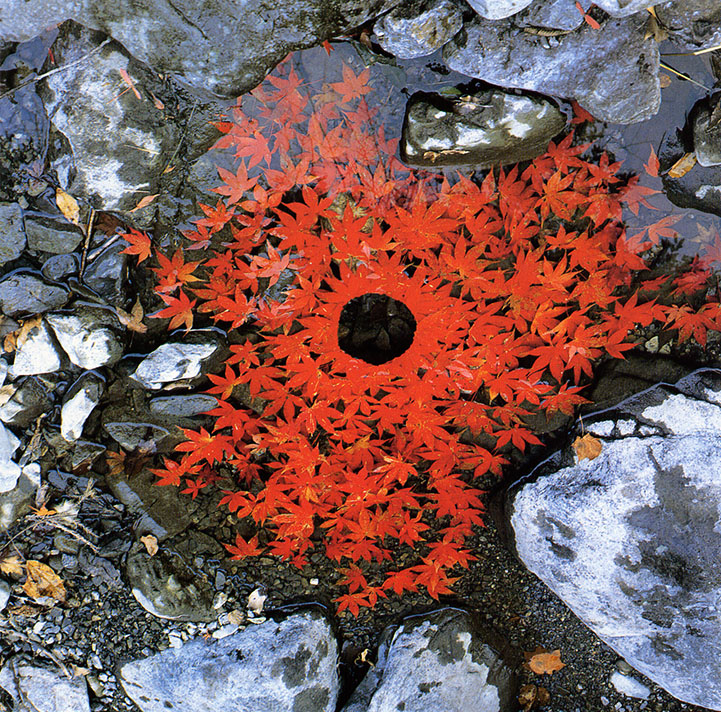

These swirls add interest to the picture by introducing change to the stock gradation of the pebbles. Another feasible reason for this uneven top-bottom balance could be Goldsworthy’s desire to leave the swirls in the dirt uncovered. The animals at the top of the food chain are usually given more attention and weight of importance. One possible explanation for this might be connected with nature’s imbalance and the idea of survival of the fittest – the rich get richer while the poor remain weak.
.jpg)
Rather, Goldsworthy wished for the top rocks to be larger in size and darker in shade. Since Goldsworthy was always careful in his composition and placement of items, the reason for this weight issue cannot be that he ran out of rocks. The circle of pebbles is situated in the center of the photograph however, the pebbles near the top of the photo appear larger than those close to the bottom of the frame. Goldsworthy wants the viewer the fall into this black hole with him for the purpose of environmental awareness and activism. Personally, the hole seems to indicate the circular life of nature. The hole in the center of this circle is a frequent theme used by Goldsworthy which recurs within leaf circles, branches, and flowers. Goldsworthy is an open environmentalist who incorporates nature into this work through manipulation of her collective wonders. The black hole in the center of the pebble circle appears deeper it recedes into the dirt below offering a gaze into the world beneath. As the viewer withdraws from the black hole, the pebbles gradually change from a clean white to a sooty grey with milky and mid-tone greys in between. He placed the lightest shades in the center, creating a black circle in the middle which symbolizes looking within the earth from the surface. Andy Goldsworthy created this set by collecting pebbles in various shades of white and grey.


 0 kommentar(er)
0 kommentar(er)
